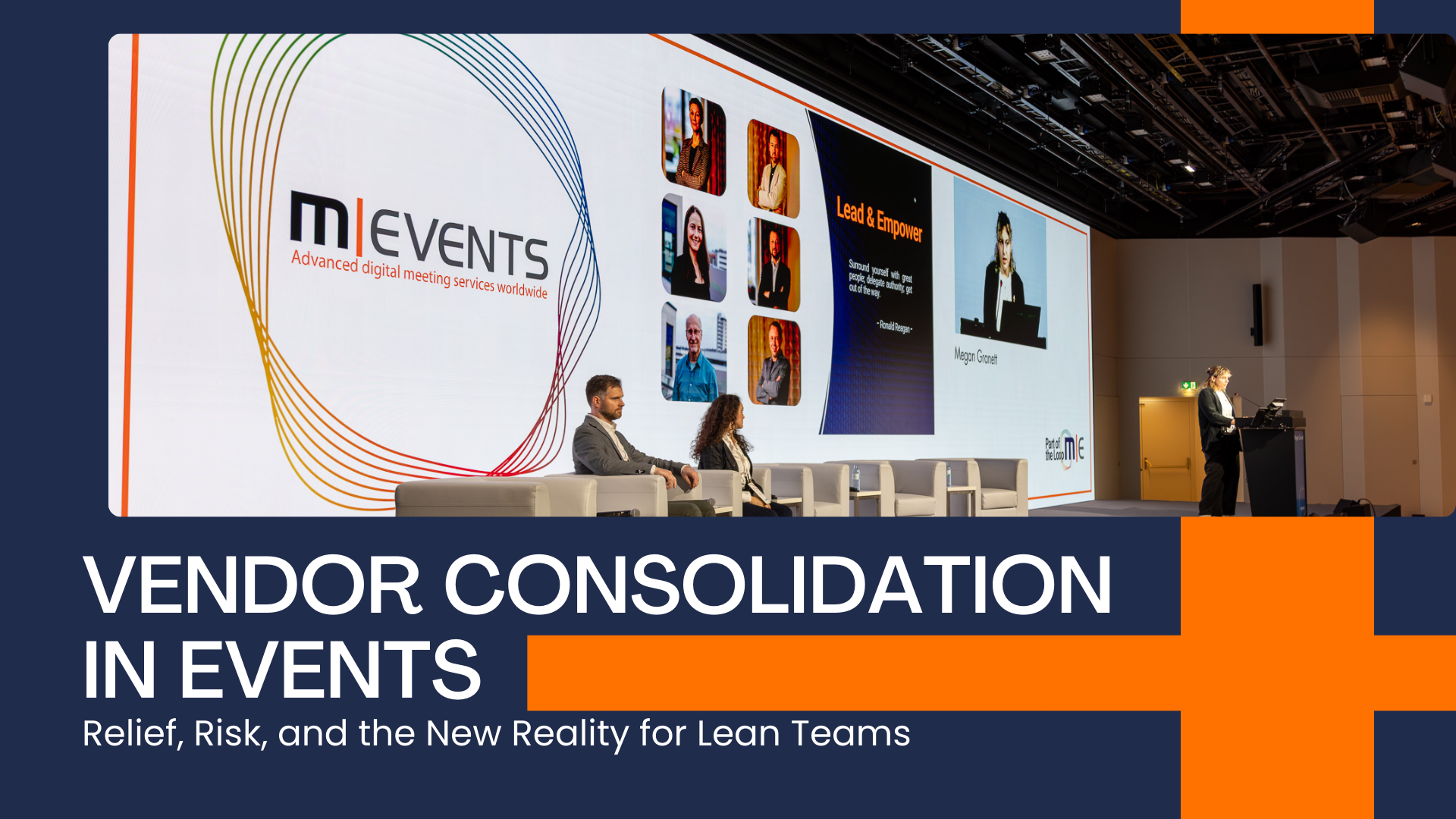No More USB Sticks: Seamless Presentation Management for Global Events
Why Presentations Are the Heart of Every Scientific Conference When researchers step onto the stage, they carry years of innovation, data, and...
3 min read
Megan Drost-Granett : October 02, 2025

If you’ve ever juggled five or six different vendors for one event, you know the feeling. It is like being an air traffic controller without the radar. The back-and-forth emails, overlapping timelines, unclear handoffs, and the dreaded “wait, who’s responsible for that?” moments eat away at your time and your sanity. For small or stretched teams, that coordination work becomes a hidden cost that no one budgeted for.
Let’s dive deep into how to ensure your team is supported, stress free, and not chasing down seven different vendor invoices. Through vendor consolidation and choosing a partner that supports your FULL event lifecycle, you can unlock the next level of success for your event.
Consolidation is not about handing every single task to one company. It is about grouping together the parts of your event that rely on each other so much, they are better managed under the same roof. It’s about asking a vendor you’ve enjoyed working with before, “what ARE your other offerings?”. 
Think registration, attendee badges, and lead retrieval. Think presentation management, AV services, and recording libraries. You still bring in specialists for truly niche needs, but you reduce the seams where things can slip through the cracks.
Budgets are tighter, deadlines are shorter, and no one has time to chase five project managers for one decision. By cutting down on the number of vendors, you cut down on the number of handoffs, meetings, and approval cycles.
It also makes problem-solving faster. If something goes wrong onsite, you have one partner to call who owns the whole picture.
It is not just planners driving this change. The supplier side is shifting too. We have seen big mergers and partnerships in the industry that combine multiple services under one brand. It is becoming easier to find partners who can take care of multiple event needs without you having to cobble together a patchwork team.
Which parts of your event would you never split between vendors, and which ones do you prefer to keep specialized?
The magic happens in areas where timing and coordination are everything. One team handling furniture, room builds, staging, lighting, and show control means fewer misalignments. Having the same crew run registration, manage speaker content, and update digital signage in real time avoids version issues and last-minute scrambles.
 Fewer moving parts also mean smoother onsite changes. Need to swap a panel, extend a break, or reconfigure the stage? When AV, staging, and program management are under one point of contact, it is much easier to pivot.
Fewer moving parts also mean smoother onsite changes. Need to swap a panel, extend a break, or reconfigure the stage? When AV, staging, and program management are under one point of contact, it is much easier to pivot.
Have you seen fewer hiccups or faster fixes when you have worked with a partner who covers more ground? Those are the moments where consolidation proves its value.
Relying on one partner does come with risks. You do not want to get so comfortable that you stop pushing for innovation or competitive pricing. It can also create a single point of failure. If that partner drops the ball, it is a bigger problem. For certain highly specialized needs, like broadcast-level production or medical compliance, a dedicated expert can still be worth the extra coordination.
When you have worked with a single partner across multiple scopes, what standards or agreements have made the difference for you? Those are worth locking in early.
Start by mapping out every piece of your event and how they connect. Notice where dependencies are the highest. Those are good candidates for consolidation. Track how much time you spend managing those areas, then test the waters with a smaller event or a single cluster of services. Always keep a short list of trusted specialists for the areas where they truly shine.

How do you make sure you are still getting fresh ideas and competitive bids when you consolidate? Have you ever gone back to splitting scopes after trying a single-partner model? Those are the kinds of lessons worth sharing.
At m|events, we have built a “full-loop” approach that covers everything from abstract submissions and registration to speaker management, digital signage, stage production, and post-event capture because these pieces are so intertwined.
Owning that full cycle means fewer version conflicts, faster changes, and less stress for our clients. Even in our world, the best setups mix a strong multi-faceted partner with carefully chosen specialists for the perfect balance.
Share this article

Why Presentations Are the Heart of Every Scientific Conference When researchers step onto the stage, they carry years of innovation, data, and...

Making Every Part of the Conference Work Towards Your Goal As conferences become increasingly dynamic and content-rich, traditional staging solutions...